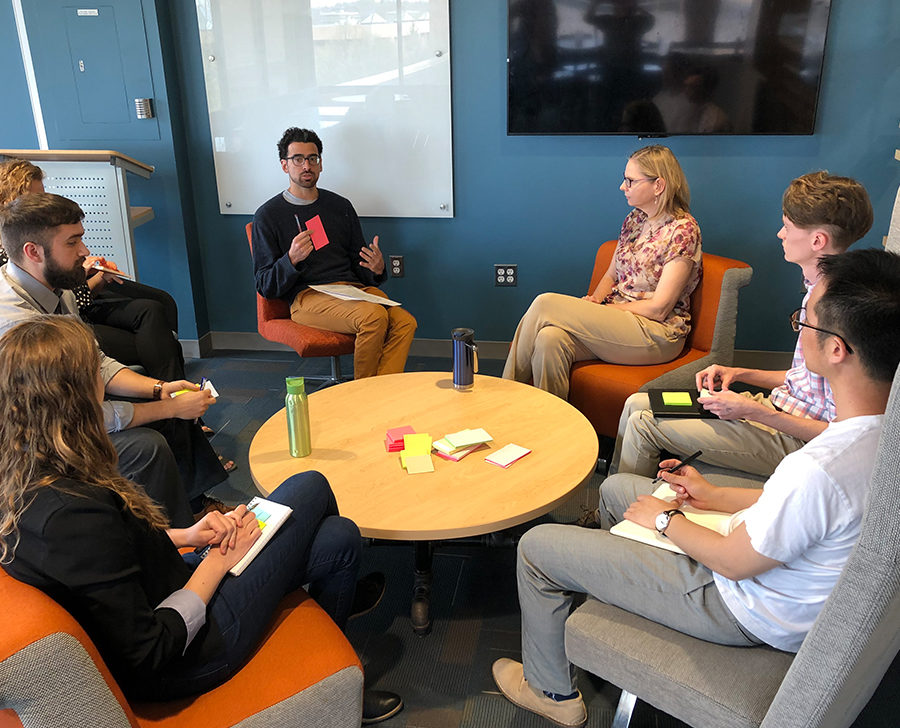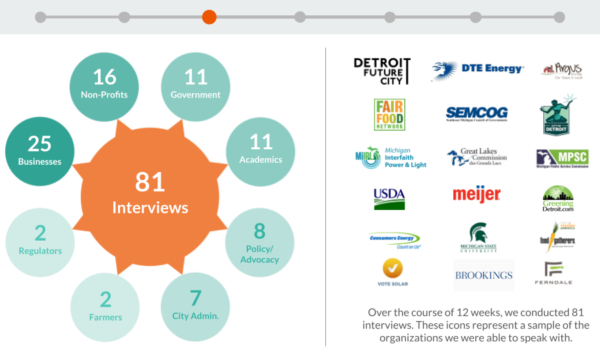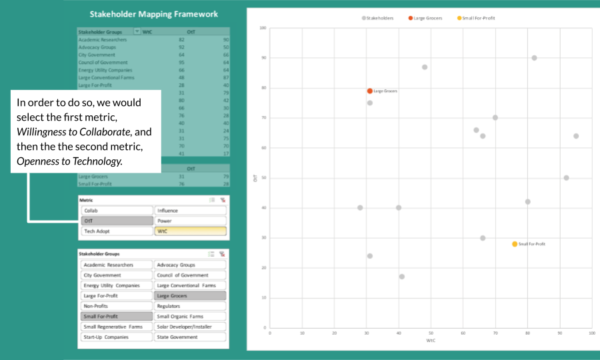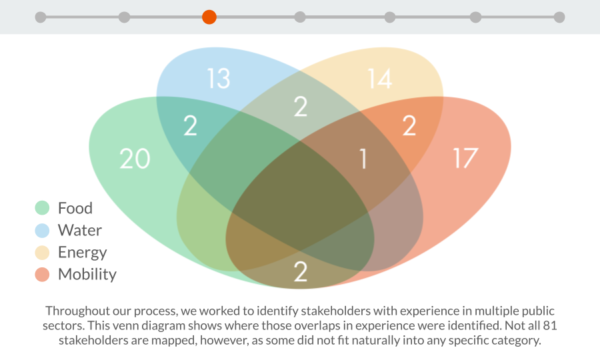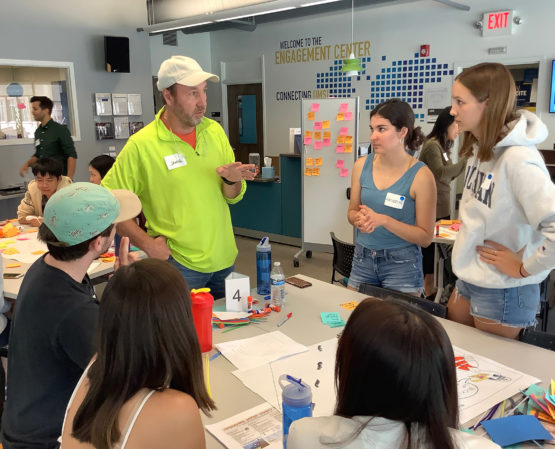Summer Studio 2019: Unraveling the Challenges of Public Sector Services in Southeast Michigan
The Situation: Public sector services in Southeast Michigan, such as water, food, energy, and mobility, are inhibited from effectively providing services to their communities because of aging and siloed infrastructure, and are in need of innovative solutions.
The Idea: Could smart, distributed technologies be a part of sustainable and equitable solutions for public sector service’s most pressing problems?
The Process: Socially Engaged Design methods, developed to bring clarity to intimidating, complex problems. This included interviews, direct observations, and secondary information gathering.
The Result: A clear direction upon which to begin her research, including: an interactive mapping tool to better help understand stakeholders’ relationships to the problem, key project goals to help direct research initiatives, and guidelines for initiating equitable community partnerships.
Written by
Hannah Groenke,
College of Literature, Science, & the Arts ’21
Most mornings for University of Michigan students and faculty begin with turning the lights on and getting into the shower. Some will eat breakfast — maybe grab a cup of coffee — and leave for class.
For many, it’s not often you have to think about how power gets to your house, how water finds its way into your sink, or how you’ll get to work. If you are eating a banana, it is highly unlikely that you are thinking about the tree it came from, the grower who picked it, the driver who shipped it, or the store clerk that put it on the shelf. You just eat it.
But when the system is broken, you notice. In Southeast Michigan, public sector services — food, water, energy, and mobility — once designed for the social structures of mid 20th century are now starting to show their age. From food deserts with a lack of access to clean water, to communities isolated by lack of transportation options, aging and siloed services are struggling to serve their communities. As many infrastructure projects come up on a 50th anniversary, it has become increasingly clear that it is time for a re-imagining and restructuring of public sector services as we have come to know them. Standing in the way of the collaboration necessary for building the future, however, are trust, historical structures, competing values, and a need for agency.
Dr. Nancy Love, a professor in the Department of Civil and Environmental Engineering wants to help. Her mission – to develop distributed smart technologies that are sustainable and equitable. To revamp systems to act synergistically with each other. To co-create technologies with the communities and industries in which they will be implemented. But with limited resources, a fixed bandwidth, and a problem space of countless human actors and limitless opportunity, the true challenge became one of ambiguity. Who do you develop connections with and what problem should you focus on to develop solutions that the community truly needs?
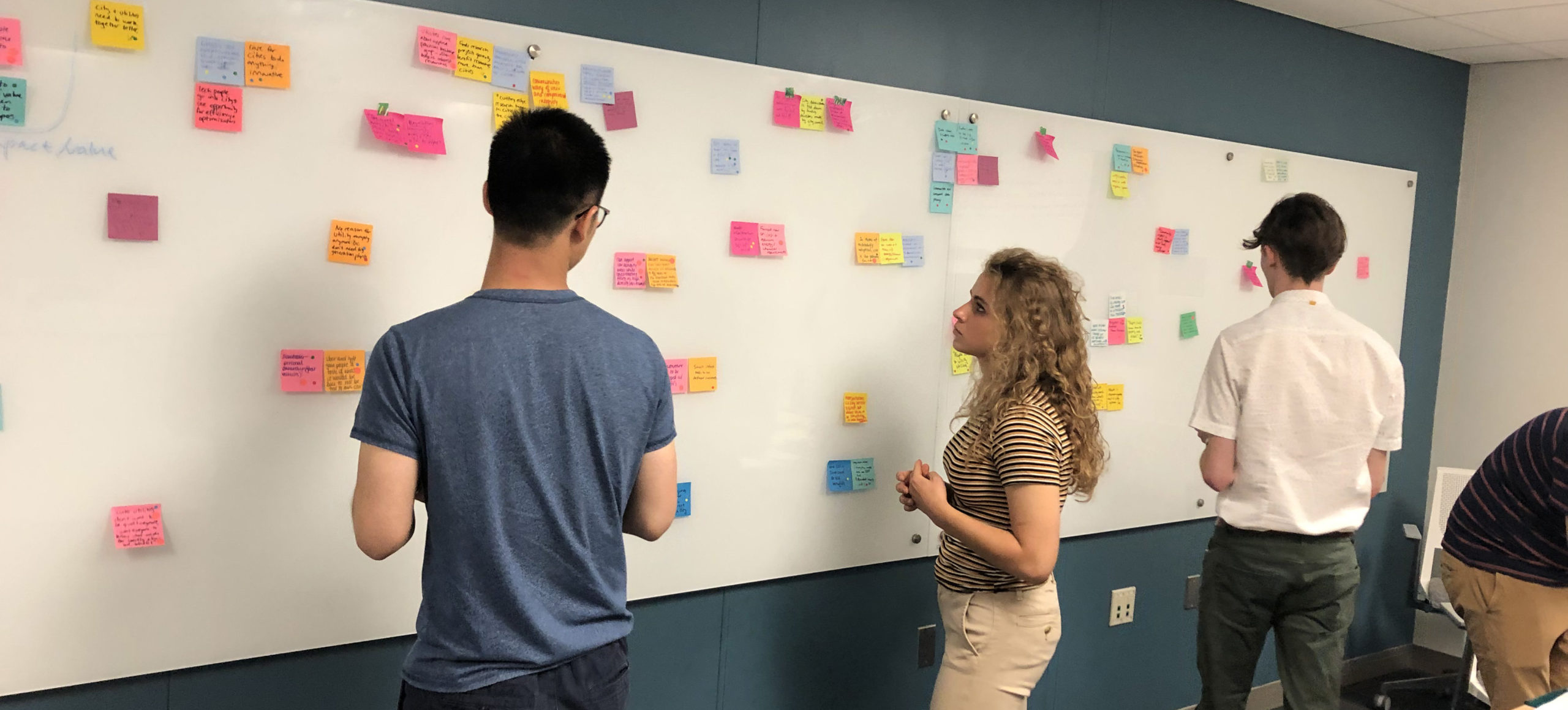 This past summer, five interns from diverse backgrounds came together to break apart the problem. Their goal was not to find one solution, but to help Dr. Love understand what partnerships in the community could support robust solutions and to help translate the needs of the community into possible research projects. In such a vast space, their mission was to find places where Dr. Love could have the most influence in the field, the most imagination in the solution, and the greatest importance in her efforts. If the problem were a sweater, the goal of the Summer Studio was to find which threads Dr. Love should tug at to start an unraveling.
This past summer, five interns from diverse backgrounds came together to break apart the problem. Their goal was not to find one solution, but to help Dr. Love understand what partnerships in the community could support robust solutions and to help translate the needs of the community into possible research projects. In such a vast space, their mission was to find places where Dr. Love could have the most influence in the field, the most imagination in the solution, and the greatest importance in her efforts. If the problem were a sweater, the goal of the Summer Studio was to find which threads Dr. Love should tug at to start an unraveling.
Together the team worked through socially engaged design processes to unpack the complexity of the situation. Socially engaged design is an approach to design that places emphasis on the human voice by considering individuals as experts of their own lives and integrating the broader social, political, and economic contexts that shape design solutions. The approach takes the researcher out of the central focus in order to work through ambiguity and complexity and bring clarity to big problems. In doing so, designers are pushed to analyze their own agenda and background experience to understand how their work might be impacted by biases and internalized assumptions about the problems they are working to address.
Over the course of more than 80 interviews with stakeholders from food, energy, water, and mobility sectors all across Southeast Michigan, the team synthesized the voices of the vast landscape of public sector services to identify three essential insights that would lead Dr. Love to the threads that would support the most valuable unraveling of the problem space. The team created three deliverables to help launch new research projects:
- An interactive mapping tool to guide potential partnerships and compare the characteristics of different stakeholders.
- A list of design principles that break broad research goals into actionable steps.
- A detailed plan for a workshop to start building community partnerships.
Armed with these three products, Dr. Love’s work with the Studio has provided her sense of exactly who is involved, a new insider perspective of the challenge of aging infrastructure, and guidelines get started on tackling big projects.



